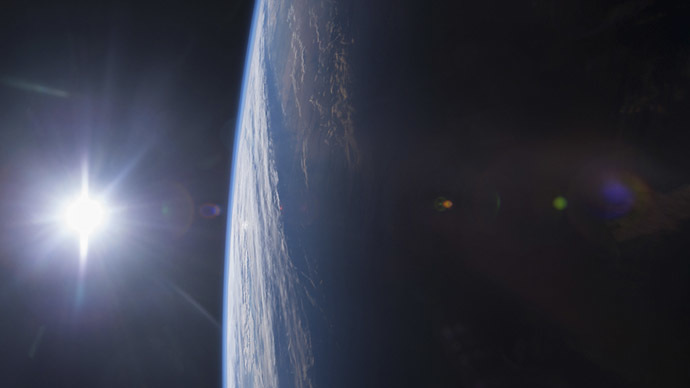Mysterious 'X-Files' noises captured 22 miles above Earth's surface

For the first time in 50 years, mysterious 'X-Files' sounds have been recorded from the edge of space. A helium balloon built by a student for a NASA project captured the eerie hisses and whistles 22 miles above the Earth's surface.
The bizarre noises were captured using equipment designed and built by Daniel Bowman, a graduate student at the University of North Carolina at Chapel Hill, according to LiveScience.
The instruments recorded atmospheric infrasound – sound waves at frequencies below 20 hertz. Since infrasound is below human hearing range, the noises can only be heard when the recording is sped up.
"It sounds kind of like 'The X-Files,'" Bowman said. He added that the intensity of the sounds came as a shock, stating that he was “surprised by the sheer complexity of the signal.”
Capturing the eerie noises wasn't exactly a simple task – it involved infrasound microphones dangling from a helium balloon which flew above the US states of New Mexico and Arizona last year. Launched on August 9, 2014, the flight was part of an annual project conducted by NASA and the Louisiana Space Consortium. Bowman's experiment was one of 10 payloads flown as part of the High Altitude Student Platform (HASP) last year.
During its nine-hour flight, the balloon floated some 450 miles (725 km) and reached a height of more than 123,000 feet (37,500 meters). This is a distance of 62 miles (100 km) above the Earth's surface – an area above where airplanes fly, but below the boundary which marks the top of the stratosphere. It was the first time an infrasound study has reached such heights.
The source of the noises, which were captured 22 miles above Earth, remain a mystery to scientists, though many have speculated about the cause.
Those speculations include ocean waves, gravity waves, clear air turbulence, noise from the balloon cable itself, and even a wind farm under the balloon's path.
Natural occurrences such as storms and earthquakes can also cause infrasounds.
Regardless of the cause, the fact the recording exists is a big step forward, as it marks the first time acoustic recordings have taken place in the stratosphere in 50 years, according to Bowman.
Scientists are hoping more information will be revealed during this year's HASP balloon launch, scheduled to take place this summer.
"I think this work has opened new ground for more research," said Omar Marcillo, a geophysicist at Los Alamos National Laboratory in New Mexico, who was not involved in the study. "It's very important for the entire [infrasound] community."












